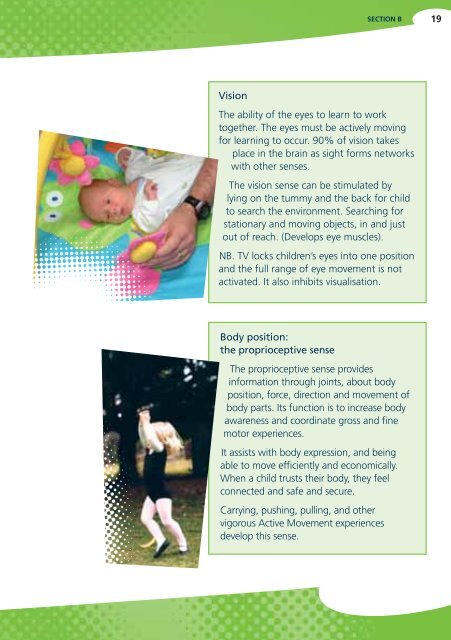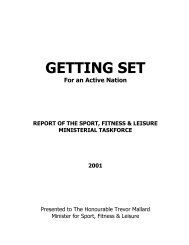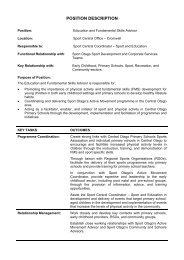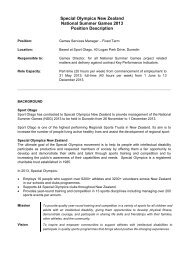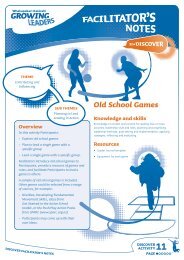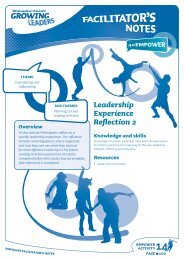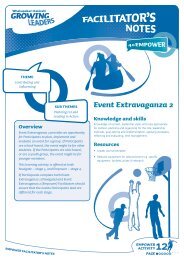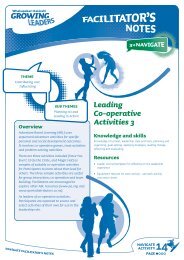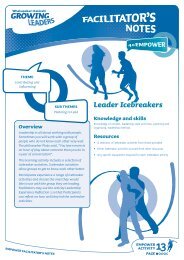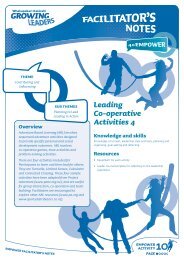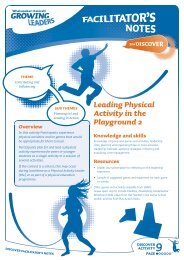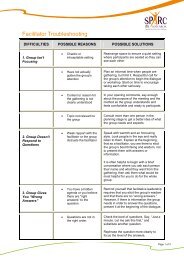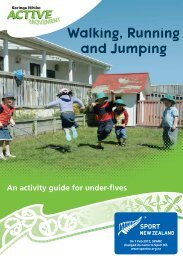An Introduction to Active Movement Koringa Hihiko - Sport New ...
An Introduction to Active Movement Koringa Hihiko - Sport New ...
An Introduction to Active Movement Koringa Hihiko - Sport New ...
You also want an ePaper? Increase the reach of your titles
YUMPU automatically turns print PDFs into web optimized ePapers that Google loves.
SECTION B<br />
19<br />
Vision<br />
The ability of the eyes <strong>to</strong> learn <strong>to</strong> work<br />
<strong>to</strong>gether. The eyes must be actively moving<br />
for learning <strong>to</strong> occur. 90% of vision takes<br />
place in the brain as sight forms networks<br />
with other senses.<br />
The vision sense can be stimulated by<br />
lying on the tummy and the back for child<br />
<strong>to</strong> search the environment. Searching for<br />
stationary and moving objects, in and just<br />
out of reach. (Develops eye muscles).<br />
NB. TV locks children’s eyes in<strong>to</strong> one position<br />
and the full range of eye movement is not<br />
activated. It also inhibits visualisation.<br />
Body position:<br />
the proprioceptive sense<br />
The proprioceptive sense provides<br />
information through joints, about body<br />
position, force, direction and movement of<br />
body parts. Its function is <strong>to</strong> increase body<br />
awareness and coordinate gross and fine<br />
mo<strong>to</strong>r experiences.<br />
It assists with body expression, and being<br />
able <strong>to</strong> move efficiently and economically.<br />
When a child trusts their body, they feel<br />
connected and safe and secure.<br />
Carrying, pushing, pulling, and other<br />
vigorous <strong>Active</strong> <strong>Movement</strong> experiences<br />
develop this sense.


